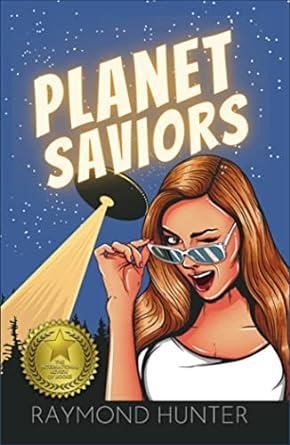Writing your first science fiction novel is like stepping into an uncharted universe, filled with endless possibilities and boundless creativity. The allure of sci-fi lies in its power to transport readers to otherworldly realms, explore futuristic technologies, and tackle profound questions about humanity, society, and the cosmos. Yet, the journey from a spark of inspiration to a finished novel can feel as vast and daunting as the galaxies you wish to create.
Whether you’re dreaming up alien civilizations, crafting advanced AI, or imagining epic space adventures, this guide will help you navigate the process of turning your visionary ideas into a polished, published novel. By breaking down the writing process into manageable steps, you’ll gain the tools and confidence to bring your sci-fi story to life and share it with the world.
-
Brainstorming Your Concept
Every great sci-fi novel starts with a compelling idea. Whether it’s a futuristic world, a unique technology, or an alien species, your concept will be the foundation of your story. Begin by brainstorming what excites you about the genre. Consider the “what if” scenarios that intrigue you—what if humans could travel through time? What if artificial intelligence became self-aware? What if an alien race made contact with Earth? Let your imagination run wild.
Once you’ve settled on a concept, think about how it can be developed into a full narrative. Who are your characters? What challenges do they face in this world you’ve created? What themes will your story explore? Answering these questions will help you flesh out your idea and give it direction.
-
World-Building
In science fiction, the world your characters inhabit is just as important as the plot. World-building is where you lay the groundwork for your story’s setting, technology, society, and rules. This step is crucial in making your story believable and immersive.
Start by defining the rules of your world. Is it set in the distant future, on a different planet, or in an alternate reality? How does technology shape society? What are the cultural, political, and social structures in place? The more detailed your world, the easier it will be to write a story that feels authentic.
Don’t be afraid to get creative with your world-building. Consider how different environments, like a city built in space or a dystopian Earth, would impact daily life. Think about the challenges your characters might face in this world—these can drive your plot and create conflict.
-
Developing Your Characters
Characters are the heart of any story, and in sci-fi, they often grapple with extraordinary circumstances. Your protagonists should be well-rounded and relatable, even if they’re navigating alien landscapes or interacting with advanced AI.
When developing your characters, consider their motivations, backgrounds, and relationships. What drives them? How do they react to the world around them? In sci-fi, characters often confront moral and ethical dilemmas—how they respond to these challenges can reveal deeper aspects of their personalities.
It’s also important to create compelling antagonists or opposing forces. These don’t always have to be villains in the traditional sense; they could be societal norms, technological constraints, or even internal struggles. The tension between your characters’ goals and the obstacles they face will keep readers engaged.
-
Plotting Your Story
With your world and characters in place, it’s time to plot your story. A well-structured plot is essential in keeping readers hooked from beginning to end. Start by outlining the major events in your story—these could be key turning points, moments of conflict, or character development arcs.
Think about how your plot will unfold over the course of the novel. Will it be a linear narrative, or will it jump between different timelines or perspectives? In sci-fi, you have the freedom to experiment with structure, but it’s important to maintain clarity to keep your readers on track.
Consider incorporating classic sci-fi elements like space travel, futuristic technology, or encounters with extraterrestrial life, but ensure they serve the story rather than overshadow it. Your plot should be driven by your characters’ actions and decisions, not just the setting or gadgets.
-
Writing and Revising
Once you’ve plotted your story, it’s time to start writing. Set a regular writing schedule to keep yourself on track, and don’t be afraid to write a rough first draft. The goal is to get your ideas down on paper; you can refine them later.
After completing your first draft, take a break before revising. This distance will give you fresh eyes when you return to your manuscript. During revisions, focus on tightening the plot, deepening character development, and ensuring your world-building is consistent.
Seek feedback from beta readers or join a writing group to gain different perspectives on your work. Constructive criticism is invaluable in helping you polish your novel.
-
Publishing Your Sci-Fi Novel
With your manuscript revised and polished, the final step is getting it published. You have several options: traditional publishing, self-publishing, or hybrid publishing. Research each route to determine which is best for you. Traditional publishing offers the support of an established publisher, but self-publishing gives you complete control over the process.
No matter which path you choose, prepare a strong query letter and synopsis if you’re submitting to agents or publishers. If self-publishing, invest in professional editing, cover design, and marketing to ensure your book stands out in a competitive market.

Conclusion
Writing your first sci-fi novel is a challenging but rewarding journey. By following these steps—brainstorming your concept, building your world, developing your characters, plotting your story, writing and revising, and finally publishing—you can bring your unique vision to life. Remember, the key to a successful sci-fi novel lies not just in its futuristic elements but in the universal themes and emotions that resonate with readers. Embrace the adventure, and soon your idea will transform into a published page, ready to transport readers to new worlds.
Need inspiration? Start your journey into science fiction with “Planet Saviors” authored by Raymond Hunter, currently accessible for acquisition! Keep in mind, the allure of an unforgettable sci-fi expedition resides in the details that animate your imagined planets. Seek further inspiration in sci-fi writing through Raymond Hunter’s “Planet Saviors” Acquire your copy today and refine your skills in effortlessly crafting diverse planets.




